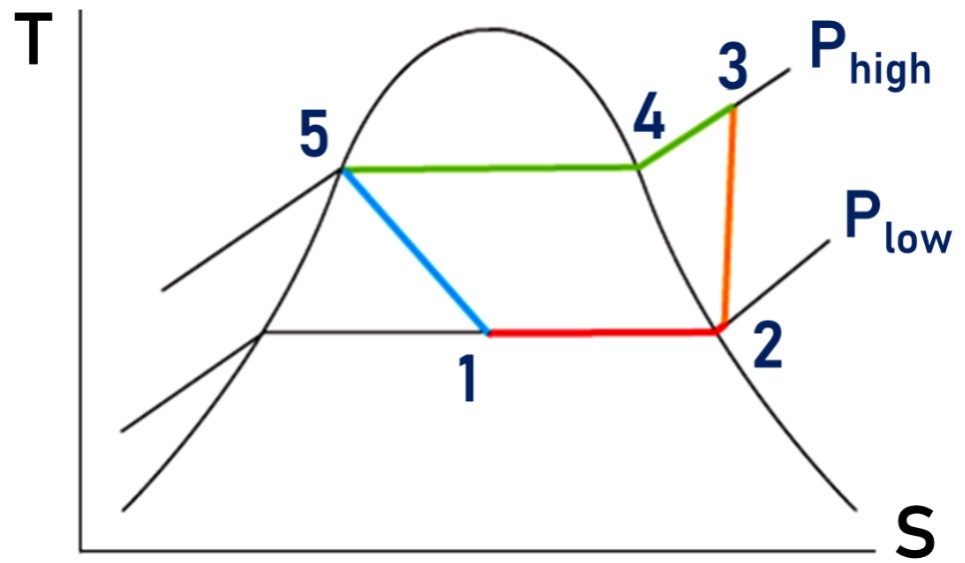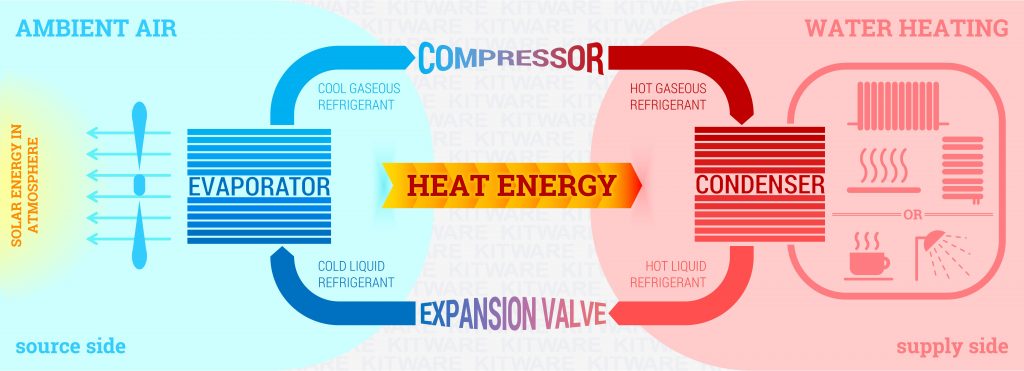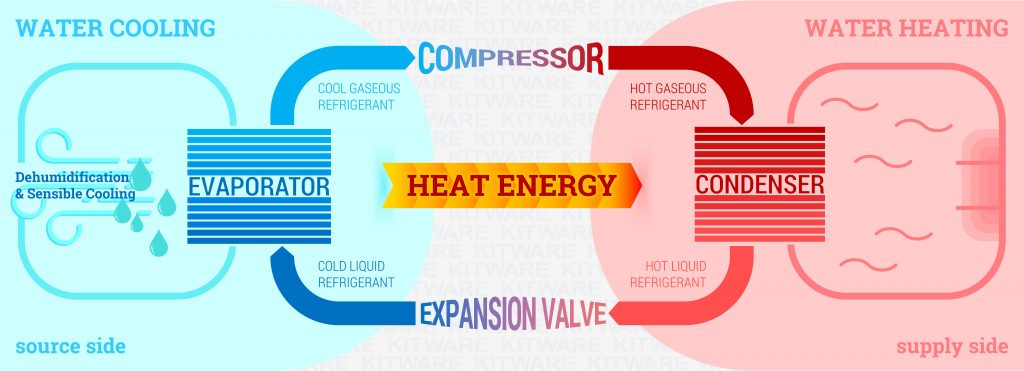Heat pumps are machines that utilises the refrigeration cycle to transfer heat from a source to the supply side.
An electrical compressor circulates a refrigerant between a condenser and an evaporator. Heat energy is released when gaseous refrigerant is condensed into liquid at the condenser, whereas heat energy is absorbed into the liquid refrigerant at the evaporator, turning it into gaseous state.

As such, heat pumps are capable of both cooling and heating purposes. The common uses of heat pumps include water heating and space heating, performed at the condenser side; while cooling is performed at the evaporator side, usually for HVAC and refrigeration. The most commonly applied heat pumps in Hong Kong are air-source heat pumps and water-source heat pumps; while other types also include ground-source (geothermal), exhaust air and solar-assisted heat pumps.
Working Principle
The fact that heat is not generated but merely transferred from one environment to the other means that the energy efficiency of heat pump is not limited by the 100% maximum like most of the machines. The efficiency of a heating-only heat pump is determined with the Coefficient Of Performance (COP), a ratio of the heat energy output of the heat pump to its electrical energy input.
Air-Source Heat Pump
The following illustrates how an air-to-water heat pump works in a hot water supply system. Heat is released into water through condenser on the supply side while heat is being extracted from the ambient through evaporator, releasing cooled air into the atmosphere as a result. For instance, when 4 units of heat energy can be supplied to water per every 1 unit of electricity input to the heat pump, it is said that the heat pump has a COP of 4.0.

Water-Source Heat Pump
Meanwhile, certain heat pump applications utilise both heating and cooling, i.e. a heat recovery heat pump. COP of these units are thus determined with the ratio of total heating and cooling energy output to the electrical energy input. The following illustrates how a water-to-water heat pump works in a heat-recovery pool heating system, or a pool climate system. For instance, when the heat pump provides 4 units of energy output in heating and 3 units of output in cooling for every 1 unit of electrical energy input, a COP of 7.0 would be obtained.

The fact that heat pumps provide more energy output than their needed electrical energy input makes them wonder machines as if they are ‘over 100% efficient’. Consequently, heat pumps have become the emerging star among water heating devices.
Benefits

Low Carbon Emission
Electric heat pumps runs on electricity, no burning of fossil fuel is directly caused to provide heating. Plus, the fact that they provide several units of energy output per unit input confirms how much heat pumps can help the world in lowering carbon emission.

Low Running Costs
Low energy consumption means less operation cost. Despite the potentially higher initial cost, using JF heat pump solutions can slash energy bill effectively in a long run.

Heating & Cooling
The potential to provide both heating and cooling output simultaneously makes heat pump at least twice as worthy as a thermal equipment, helping user to shoot two birds with one stone.

